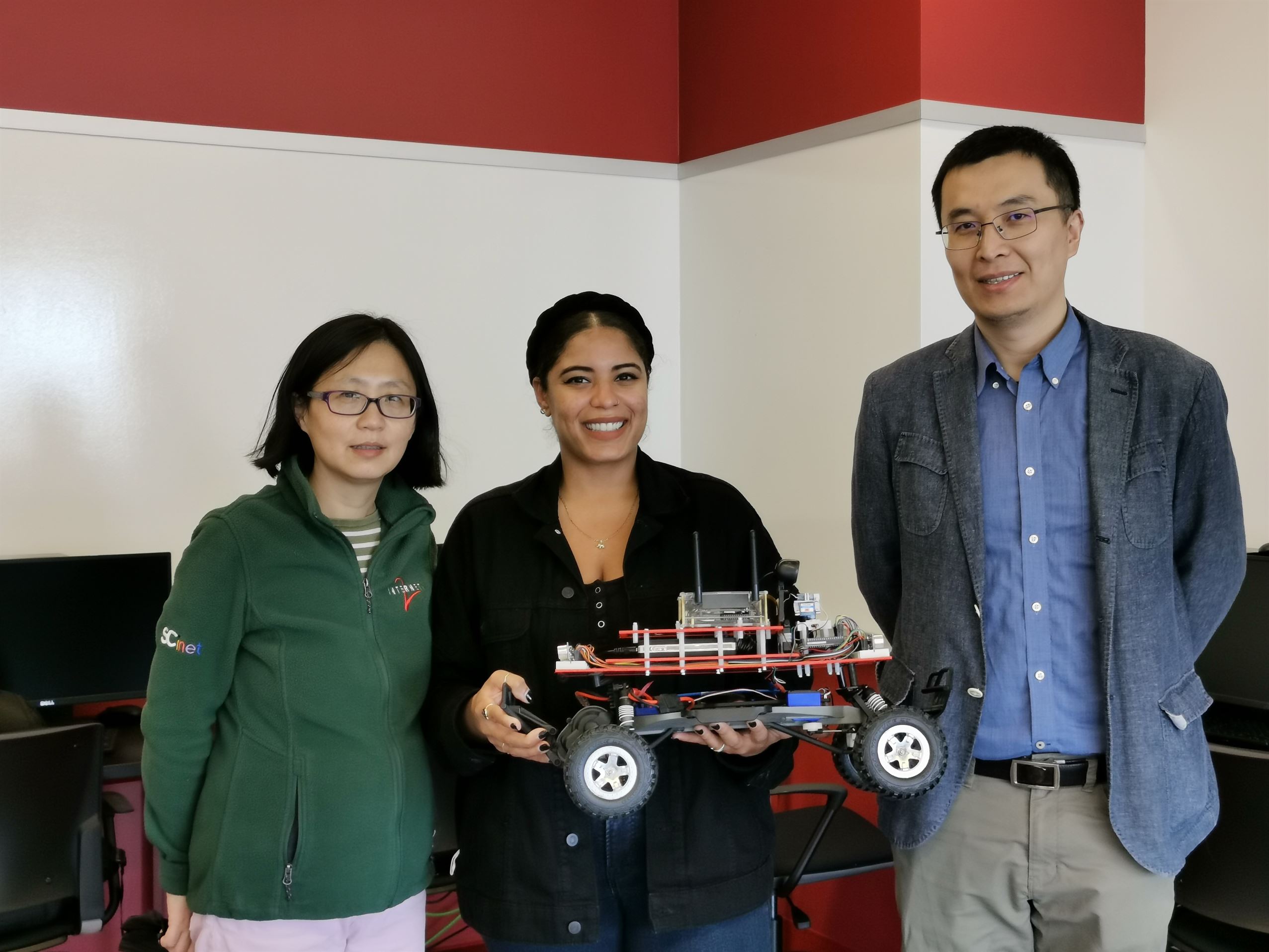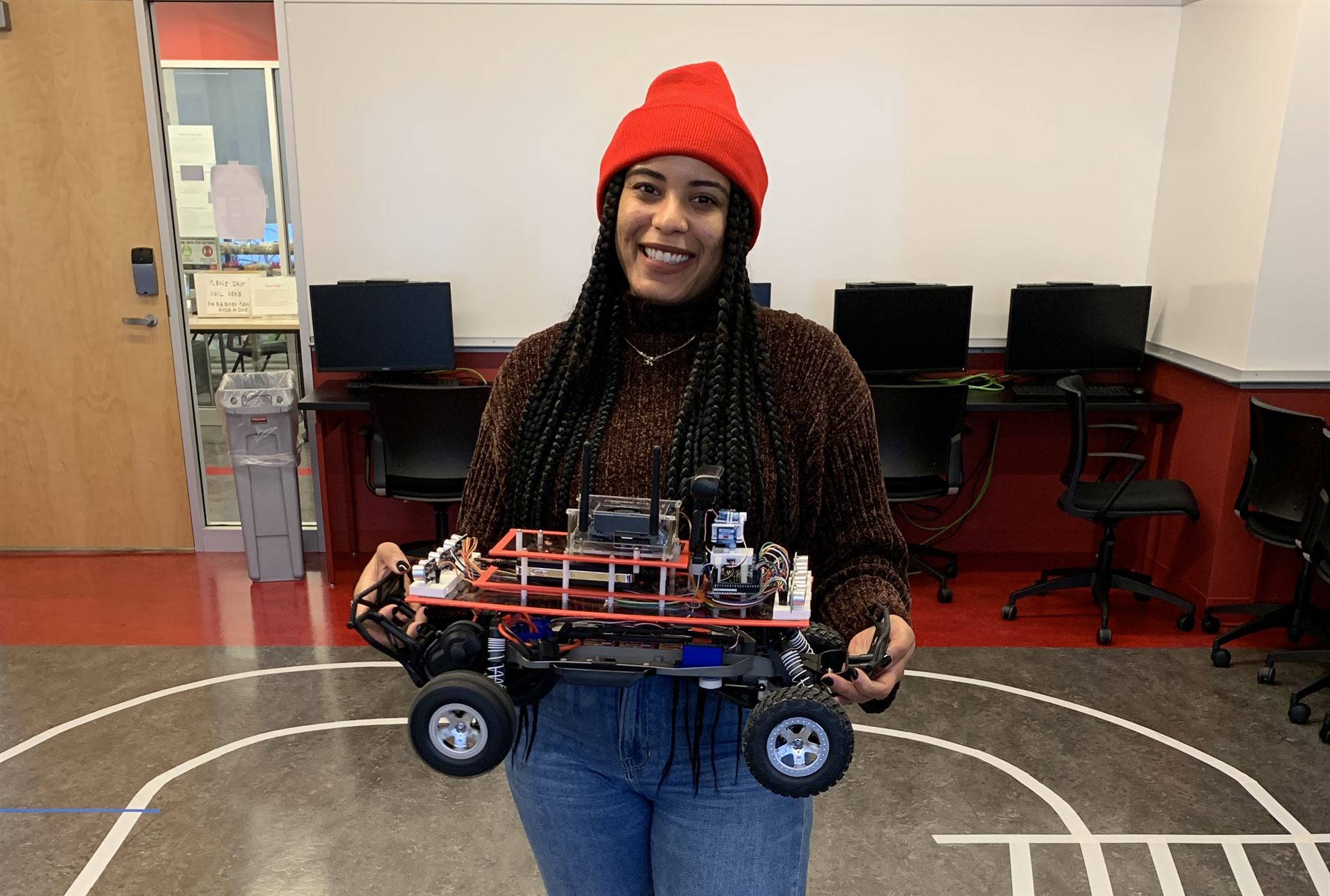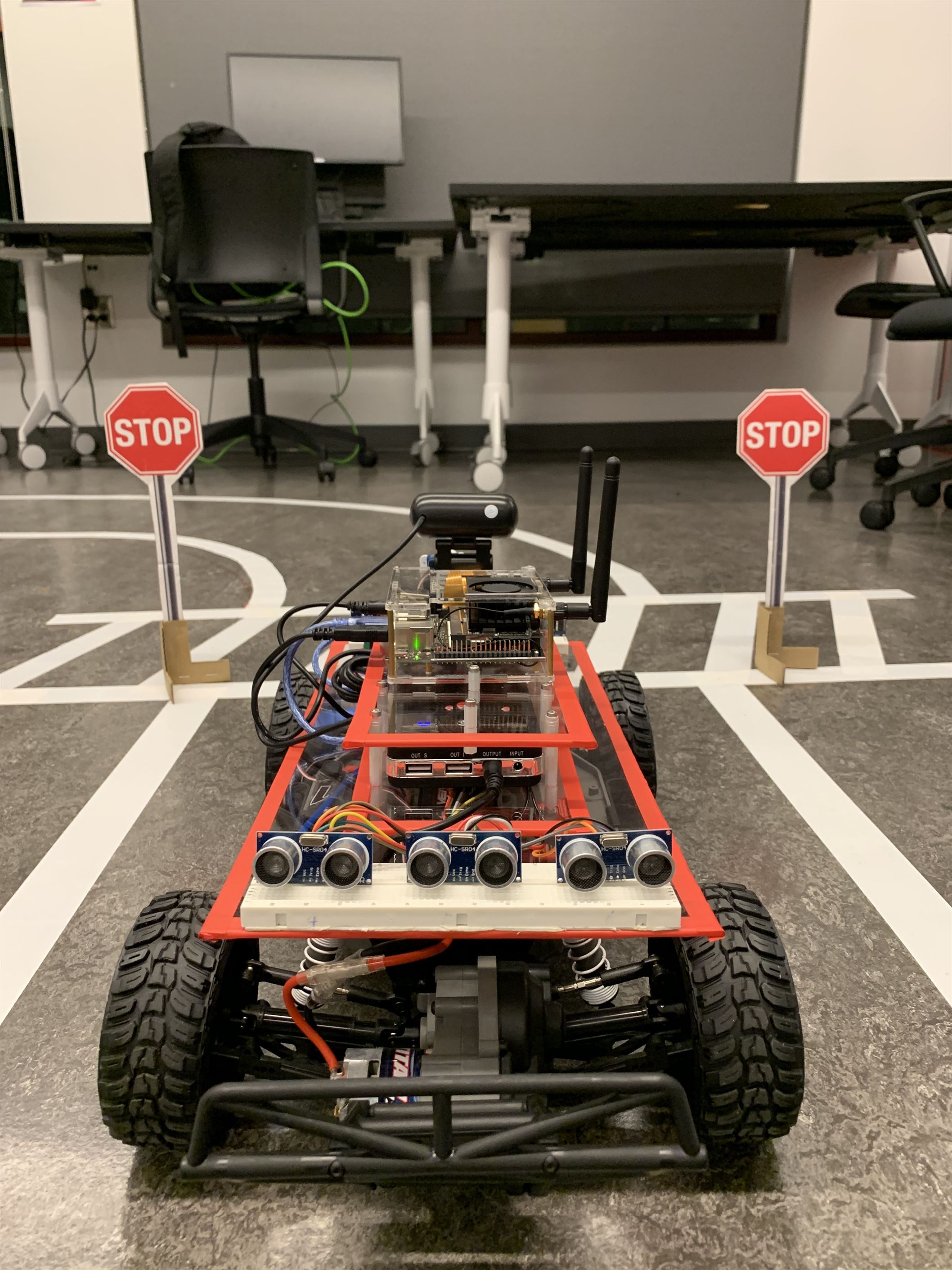Montclair State University students are prone to starting up their own businesses, sharing their crafts and creating clubs. But one student went the extra mile this past fall semester and built their own 1/10-scale autonomous vehicle, all while demanding better representation and inclusion in STEM-related programs.
Laura Paulino ended her graduate semester by building an autonomous vehicle for her master’s project this past December. Paulino, a computer science major, found an interest unexpectedly in STEM and computer science after feeling unhappy as a health educator. Paulino was given the push she needed to return to university life and pursue her master’s in computer science by her nieces and nephews.
Since Paulino’s interest in STEM was unexpected, she experienced some doubts when heading into the computer science program at Montclair State.
“I can confidently say for myself and my friends who changed careers and got their master’s degree without having a bachelor’s degree in computer science, it is a really difficult process to get through,” Paulino said.
Despite having doubts about going into the program, Paulino proved victorious when she completed her autonomous vehicle with the help of her group members Iris Li, Victor Robila and Mihir Rao, who were all high school interns and produced most of the codes.
Paulino, the project lead, overlooked the coding and integration aspects of the project. She was also responsible for debugging and testing the autonomous vehicle.
The vehicle Paulino oversaw featured three different functions that autonomous vehicles actually have. It featured a lane-tracking system, an obstruction detection system and a rearview camera to assist the vehicle in parking.
“The most difficult part was definitely the integration and testing,” Paulino said. “You can write the code but once you actually test how the code is working, that’s when all the problems arise.”
Paulino’s advisor, Dr. Weitian Wang, was the architect of the project, providing the tools needed for the physical build of the vehicle. Wang, an assistant professor of computer science, opened up the project to undergraduate and graduate students to have various ideas and perspectives included in the research.
“Our lab members, including undergraduates and graduate students, were very engaged and excellent,” Wang said. “Their efforts always kept our team energetic and innovative.”
The collaboration with passionate students brought creative problem-solving to the project due to so many different perspectives working on it.
“In our research projects, a lot of novel solutions are inspired and generated from brainstorming ideas and discussions of our lab members,” Wang said.

Dr. Michelle Zhu, Laura Paulino and Dr. Weitian Wang all worked and oversaw different aspects of the project.
Photo courtesy of Laura Paulino
While Paulino focused on leading the autonomous vehicle project, she was also busy juggling three internships at the National Aeronautics and Space Administration (NASA).
In her first internship with NASA, Paulino researched diversity and inclusion in the STEM field. Her following internship allowed her to work with the National Aeronautics Research Institute (NARI) and conduct research on utilizing drones in the events of environmental emergencies, and more specifically forest fires.
Paulino’s last internship is where she now works as a contractor since graduating in January. Paulino now interprets, analyzes and studies data in the ionosphere collected by sub-satellites at NASA.
Since Paulino has been exposed to computer science for some time now, she has also been exposed to what it means to be both a woman and a woman of color in the STEM field. Being an advocate for better representation, Paulino hopes there will be changes in the STEM field moving forward, but knows that the work has to start from inside each person.
“I really do think that every individual needs to have the curiosity and desire to work on themselves and tackle their biases,” Paulino said. “People really need to decide to look inward and identify some of the biases they might unknowingly act on.”
Despite being a head-turner in the STEM field, Paulino doesn’t limit herself or work any harder than her male colleagues who have pursued the same area of study. Paulino chooses to be comfortable and open with the uncomfortable, especially in her workplace.
“I personally decided not to feel like I had to work harder,” Paulino said. “To feel that way, there’s an initial step of you making yourself feel small and I just decided that I wasn’t going to make myself small. I am never not going to advocate for me.”
Paulino’s advocacy for better representation in the STEM field goes beyond the workplace as well. Paulino pushed students to become involved in Wang’s Robotics Club which was founded in fall 2021.
The club encourages students of any major to participate and explore possible interests in the field of robotics and artificial intelligence. The club received support from the Student Government Association (SGA), the Computer Science Department, the College of Science and Mathematics (CSAM) Dean’s Office and the National Science Foundation.
In an effort to involve younger students in STEM, the club wants to hold events for young scientists to follow their passions.
“In the upcoming years, we will organize a series of robotics academic events such as hands-on robotics competitions, robotics workshops and robotics open days for both [Montclair State] students and local K-12 students,” Wang said.
While Paulino is not working on any independent projects at the moment, she is focusing on finding her true footing in the STEM field now that she has graduated. Since Paulino handed off the autonomous vehicle project to students to work on building number two, she has been learning as much as possible from her current job at NASA.
“I am focusing this time on growing technically and professionally, but I would love to actually pursue the autonomous vehicle sector in real life someday,” Paulino said.




